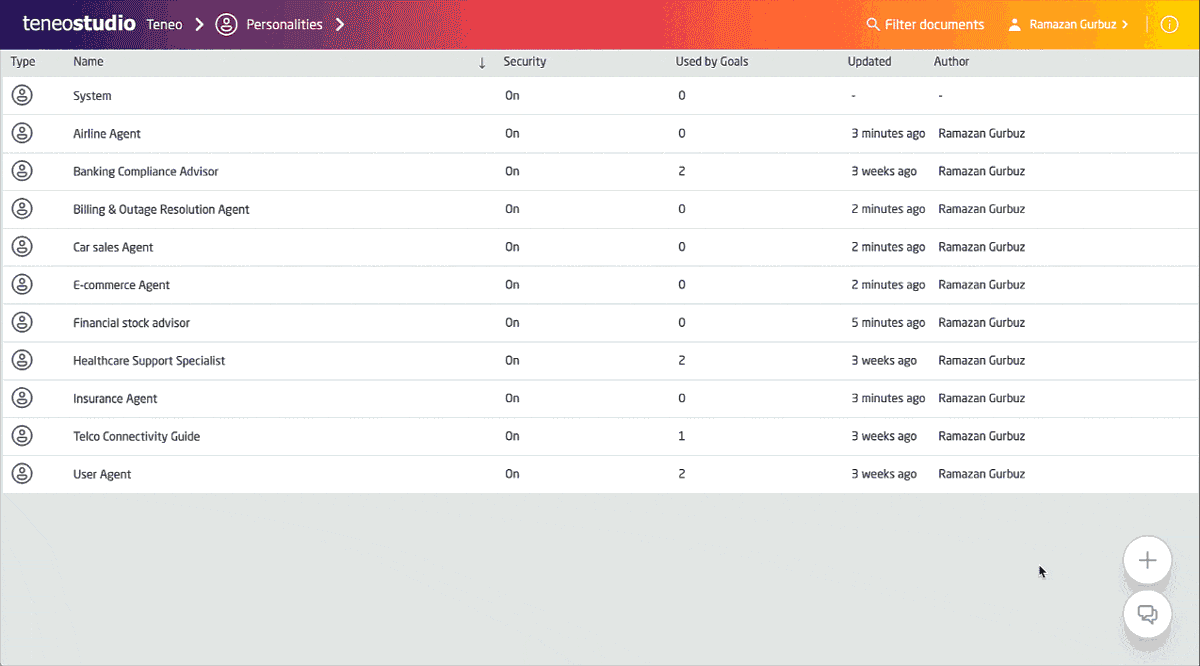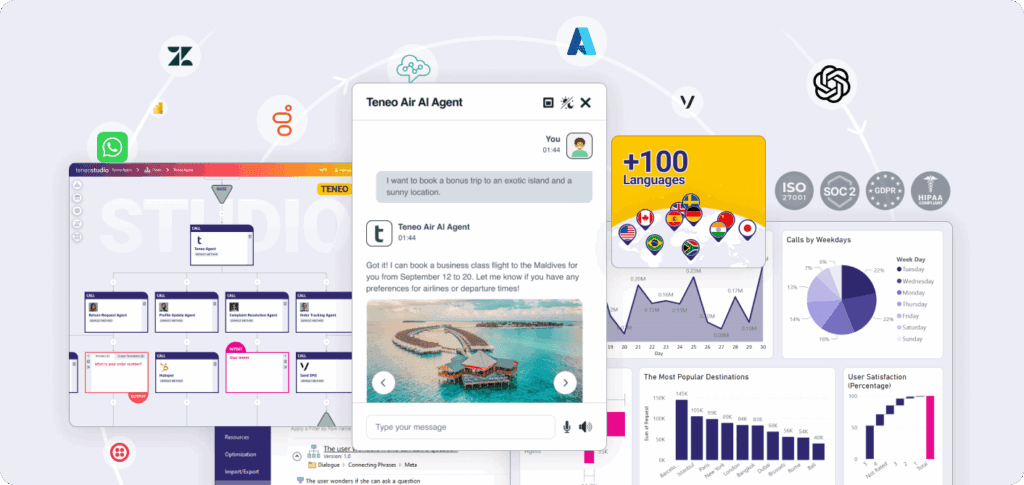Healthcare is changing fast. From digital triage to virtual assistants and automated claims processing, AI is reshaping how care is delivered, accessed, and managed. But in a world where accuracy, empathy, and compliance all matter equally, healthcare organizations need more than generic chatbots — they need intelligent, compliant, and configurable AI Agents that can adapt to real-world challenges.
That’s exactly what Teneo was designed for.

From Chatbots to Intelligent AI Agents
Traditional chatbots struggle to understand medical context, interpret intent accurately, or adapt across complex patient journeys. Teneo 8 changes that by letting healthcare teams build and deploy AI Agents visually with an easy to use UI.
In a single low-code environment, creators can:
- Combine reusable skills (like scheduling, triage, or claims) into guided flows.
- Define personalities and goals that fit the organization’s tone and mission.
- Use the Gen AI Annotator to enrich understanding of patient inputs — from symptom descriptions to billing questions.
- Connect to EHRs, CRMs, and scheduling systems to make every conversation actionable.

The result? AI Agents that don’t just answer questions — they understand context, deliver accurate outcomes, and evolve over time.
Why Healthcare Needs Modular, Compliant AI
No two healthcare organizations are alike. Hospitals, insurers, and networks each operate under strict governance, regional data laws, and evolving patient privacy standards.
That’s why the AI Agent Builder is built on Teneo’s enterprise-grade foundation — ensuring every agent you create is:
- Secure: Data never leaves your control, with built-in encryption and access management.
- Compliant: AI behaviors align with HIPAA, GDPR, and organizational governance frameworks. More info can be found on our Security Center.
- Flexible: Choose your preferred LLM provider — or multiple — without vendor lock-in.
- Scalable: Deploy across departments, channels, and languages using the same reusable skills.

With these capabilities, healthcare providers can automate safely and confidently, whether it’s managing patient onboarding, processing forms, or delivering post-care instructions.
Seeing Your AI Ecosystem Clearly with the Gen AI Overview
Managing multiple AI agents can get complex fast. The Gen AI Overview in Teneo 8 provides a clear, visual dashboard showing how every agent, personality, and goal interacts within your ecosystem.
You can instantly see:
- Which LLMs are in use
- How conversational flows trigger across systems
- What’s working — and where optimizations are needed

For healthcare teams, that means complete visibility into compliance, performance, and agent behavior — without digging through logs or code.
Practical AI Use Cases in Healthcare
Here’s how healthcare organizations are already using Teneo’s AI Agent Builder to transform operations:
- Virtual Health Assistant: Guides patients through symptom checks, triage, and follow-up care — safely and empathetically.
- Claims Support Agent: Automates claims verification and status updates while masking personal data.
- Scheduling Coordinator: Manages appointment bookings, reminders, and cancellations through conversational interfaces.
- Post-Discharge Companion: Checks in on patients after hospital stays, capturing feedback and escalating concerns when needed.

Each agent can be designed, deployed, and managed from a single, visual platform — reducing development time from months to days.
Healthcare AI That Works the Way You Do
The future of healthcare AI isn’t about replacing human care — it’s about augmenting it. With Teneo AI Agent Builder, you can create digital assistants that understand your workflows, respect your compliance boundaries, and elevate the patient experience.

Because when AI is designed to understand, adapt, and protect, healthcare teams can focus on what matters most — delivering care.
Start Building the Future of Healthcare AI
Teneo makes it easy to design, launch, and scale healthcare-ready AI agents that combine empathy with intelligence — all without writing code.


